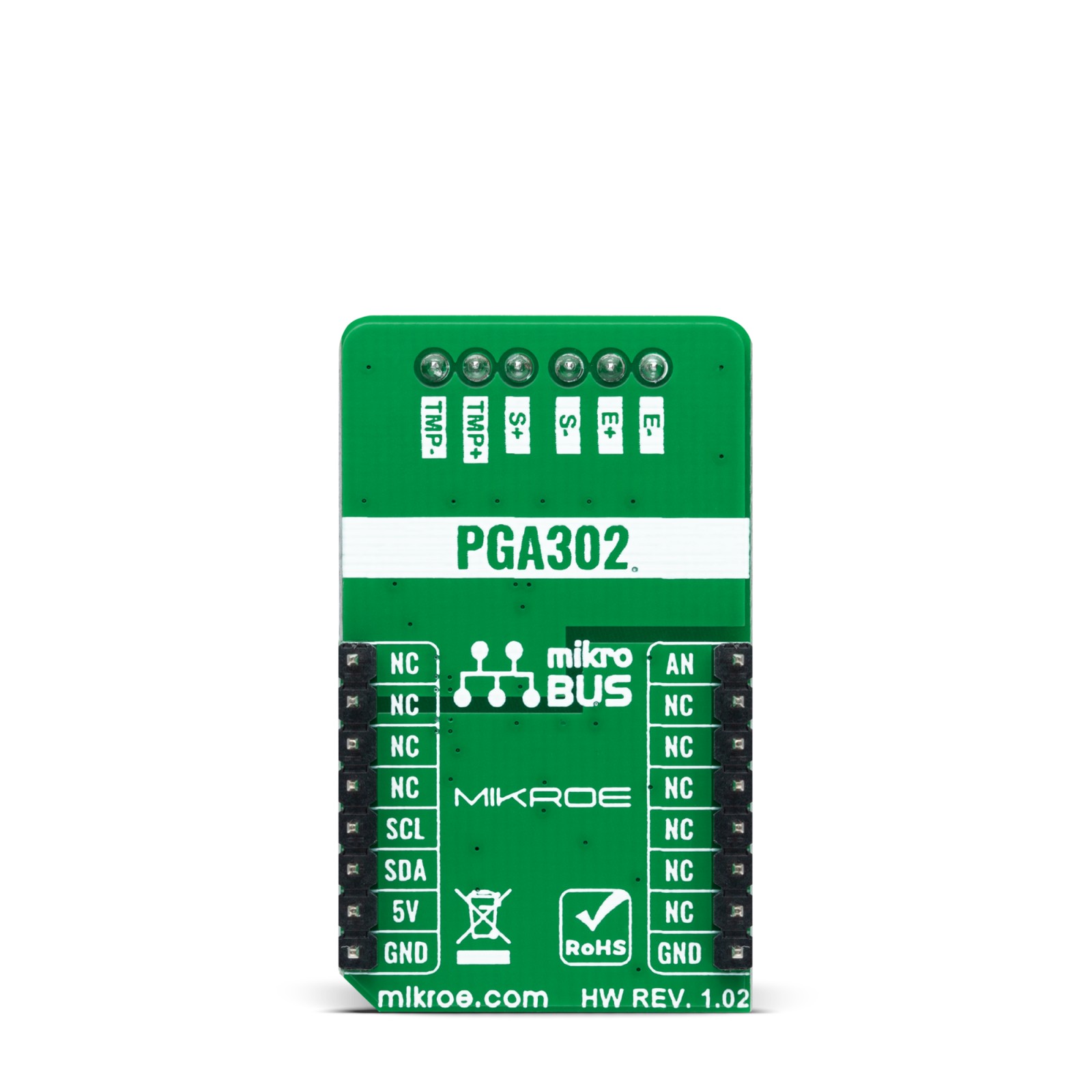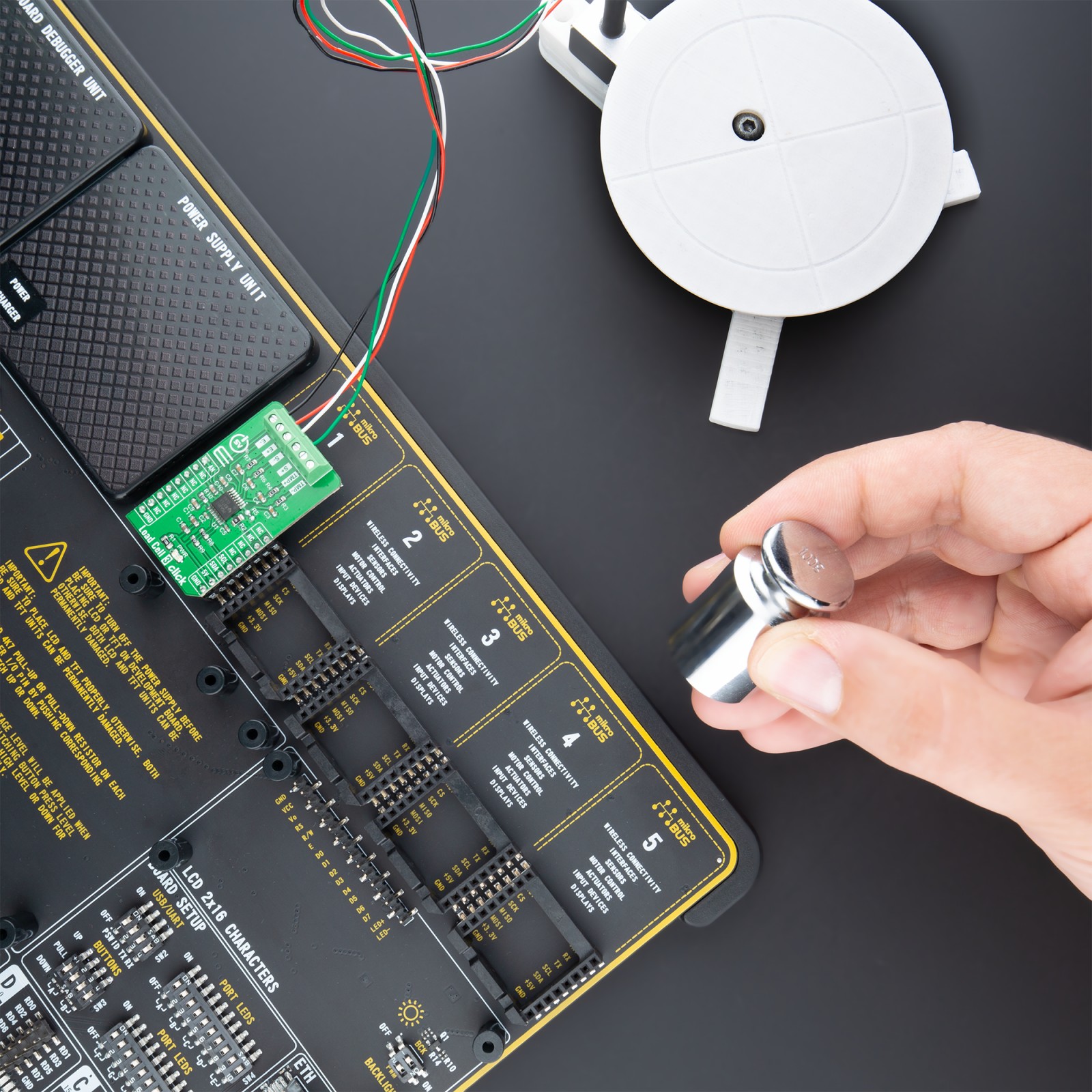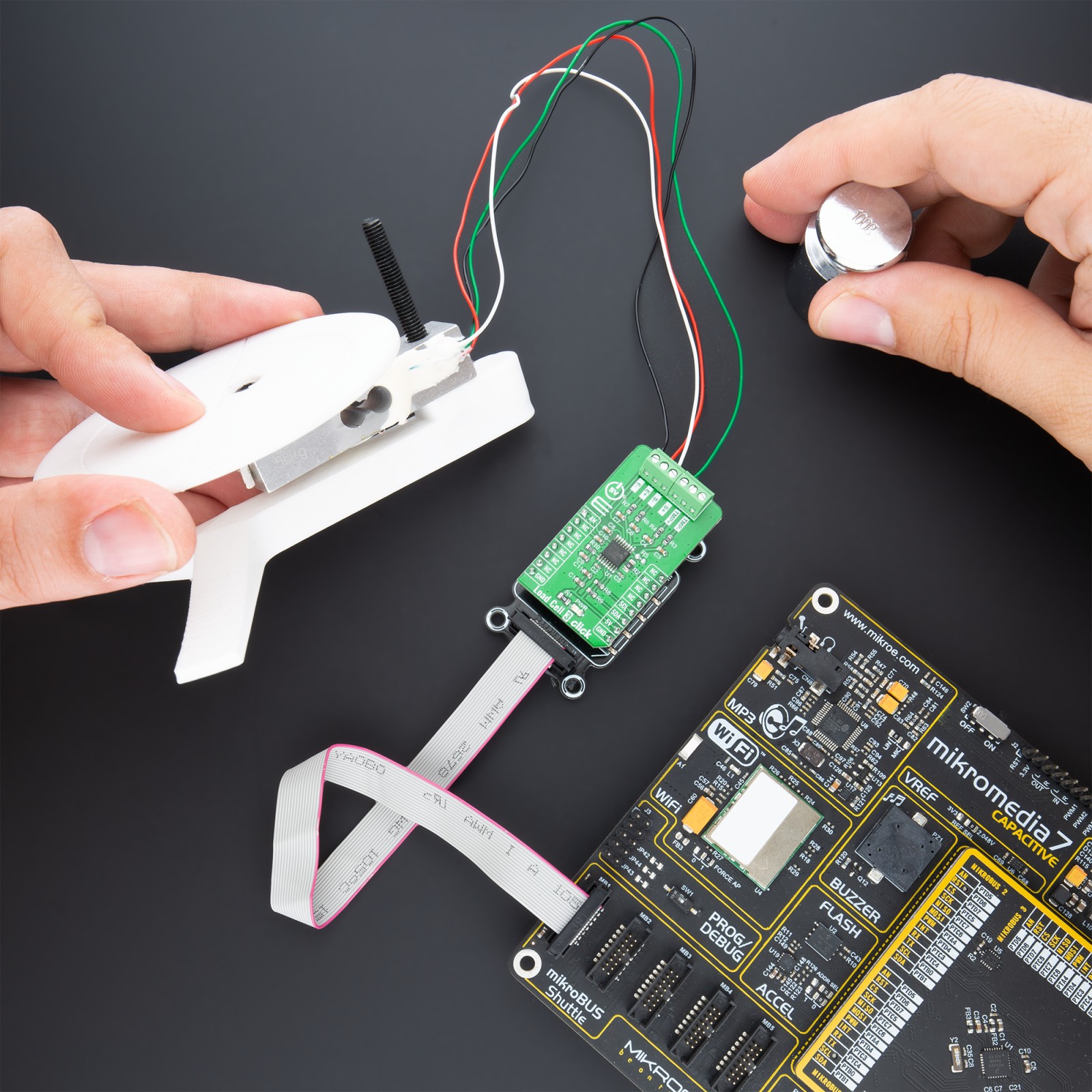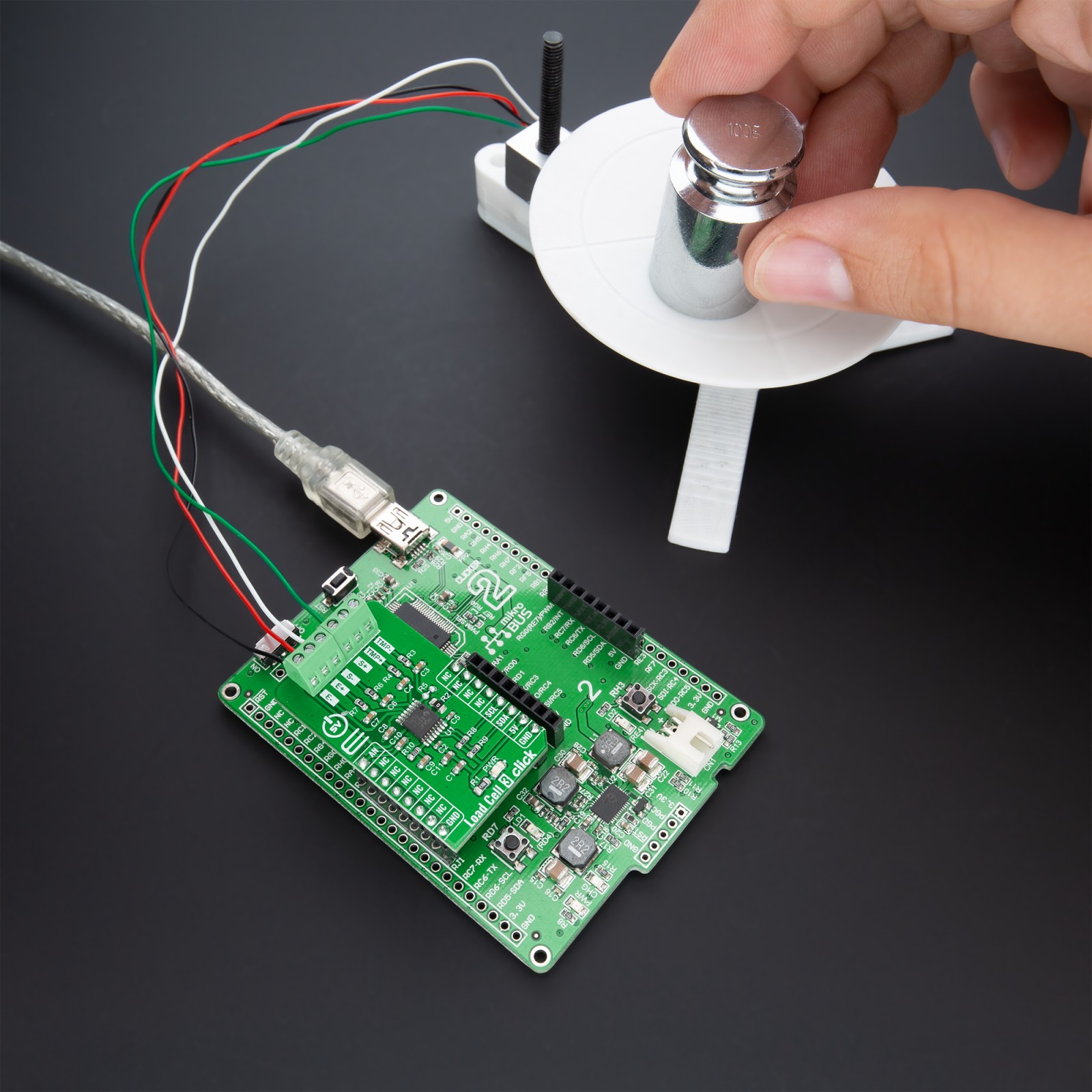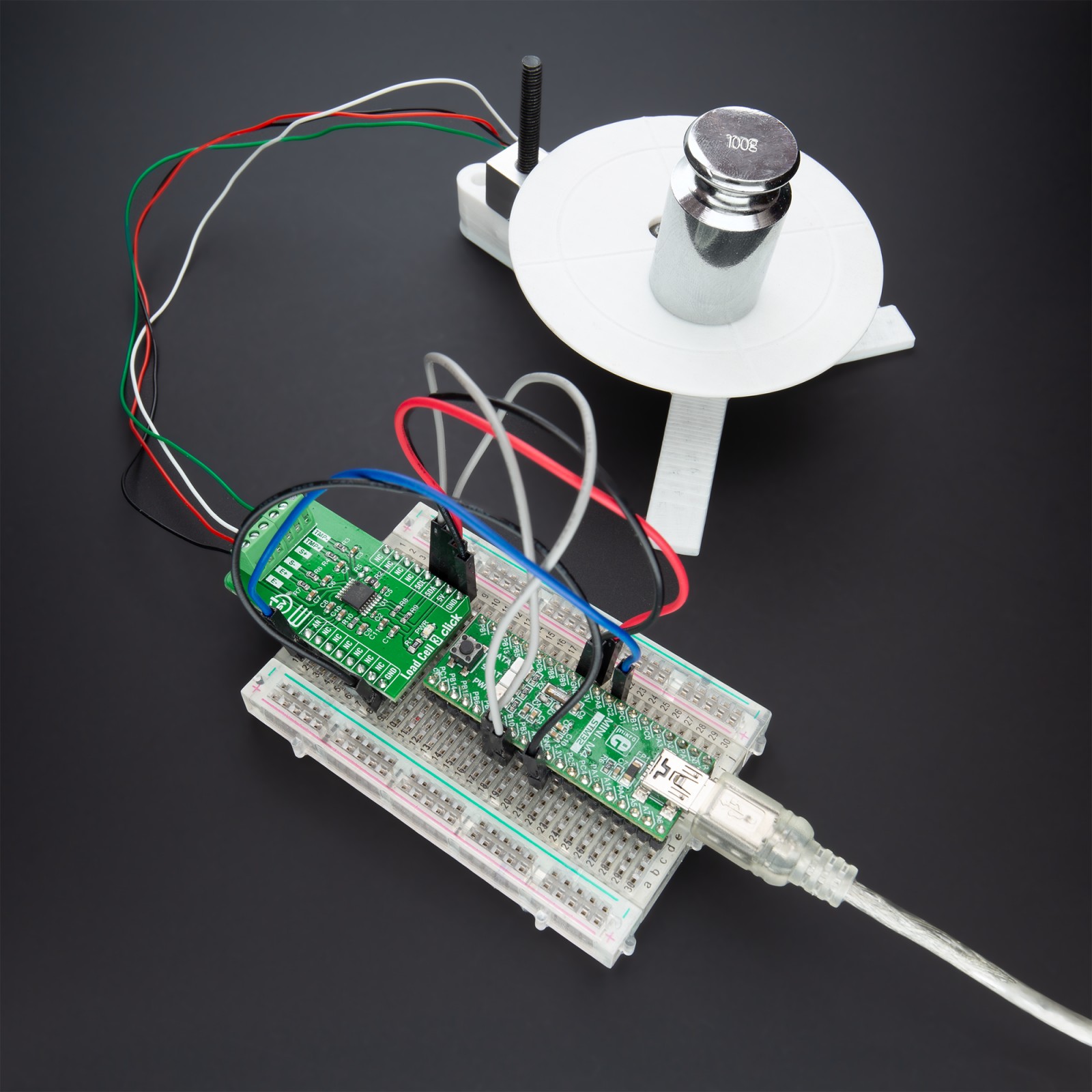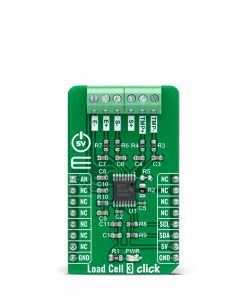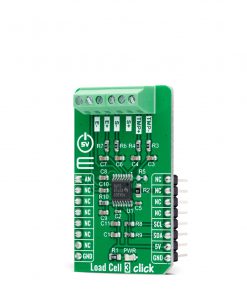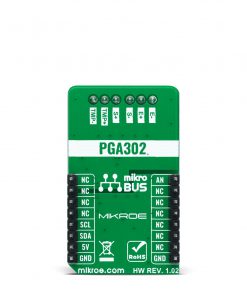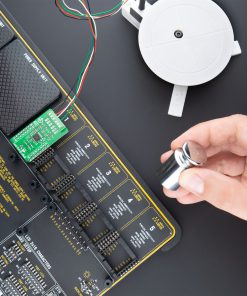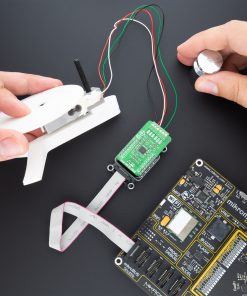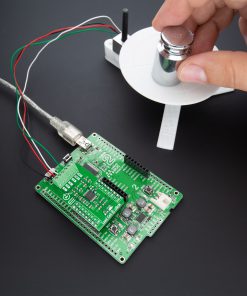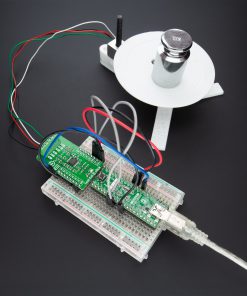Load Cell 3 Click
R520.00 ex. VAT
Load Cell 3 Click is a compact add-on board that represents a weigh scale solution. This board features the PGA302, a low-drift, low-noise, programmable signal-conditioner device designed for various resistive bridge-sensing applications from Texas Instruments. It creates 2.5V of bridge excitation and a current output source with programmable current output up to 1mA. Two identical analog front-end (AFE) channels followed by a 16-bit Sigma-Delta ADC are available at the input, where each AFE channel has a dedicated programmable gain amplifier with gain up to 200V/V. It also comes with an on-chip temperature sensor and integrated EEPROM memory for device configuration, calibration, and user data. This Click board™ has many features that make it a perfect solution for weight scale and force-sensing applications that use strain gauge load cells and other general resistive bridge signal-conditioning applications.
Load Cell 3 Click is supported by a mikroSDK compliant library, which includes functions that simplify software development. This Click board™ comes as a fully tested product, ready to be used on a system equipped with the mikroBUS™ socket.
Stock: Lead-time applicable.
| 5+ | R494.00 |
| 10+ | R468.00 |
| 15+ | R442.00 |
| 20+ | R425.36 |



